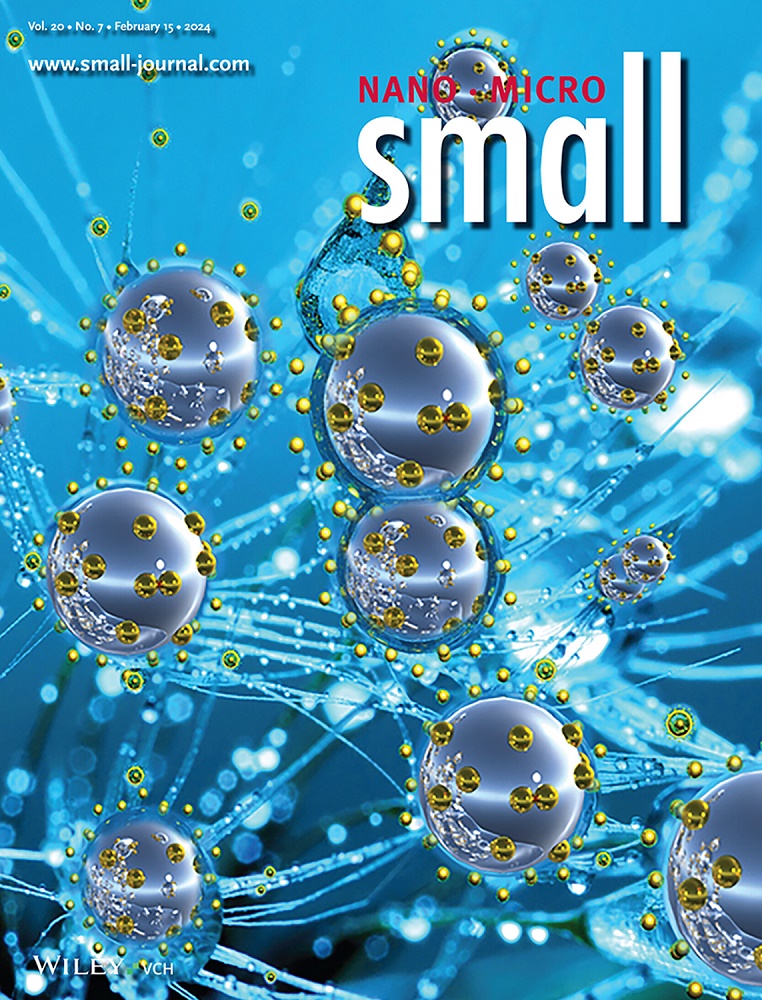Versatile Solvent‐Free Synthesis of Composite Polymer Electrolytes for Thin High‐Performance Solid‐State Lithium Metal Batteries
IF 12.1
2区 材料科学
Q1 CHEMISTRY, MULTIDISCIPLINARY
引用次数: 0
Abstract
The development of high‐performance solid‐state lithium metal batteries (SSBs) relies on the invention of efficient composite polymer electrolytes (CPEs) that offer both high ionic conductivity and mechanical stability. However, mixing polymers and inorganic particles often leads to inhomogeneous distributions, inhibiting ion movement. This work introduces a novel solvent‐free synthesis for thin CPE films, enabling scalable and straightforward electrolyte fabrication. The proposed hybrid electrolyte system consists of a self‐crosslinking polyether matrix incorporating lithium‐ion‐conducting ceramic particles. The synthesis method facilitates homogeneous dispersion of Li薄型高性能固态锂金属电池的多功能无溶剂合成复合聚合物电解质
高性能固态锂金属电池(SSBs)的发展依赖于高效复合聚合物电解质(cpe)的发明,这种电解质提供了高离子电导率和机械稳定性。然而,混合聚合物和无机粒子往往导致不均匀分布,抑制离子运动。这项工作介绍了一种新型的无溶剂CPE薄膜合成方法,实现了可扩展和直接的电解质制造。所提出的混合电解质体系由自交联聚醚基体结合锂离子导电陶瓷颗粒组成。该合成方法有利于Li6.45Al0.05La3Zr1.6Ta0.4O12 (LLZO)的均匀分散,防止团聚,在膜厚度≈30µm时具有一致的电化学性能。混合聚合物和加入添加剂的能力进一步提高了电解质的可调性,提供了一种通用的方法。电化学表征表明,制备的杂化cpe具有优异的离子电导率(60°C时为0.27 mS cm - 1)和与锂金属的相容性,而在高质量负载磷酸铁锂(LFP, 7 mg cm2)阴极中实现的cpe在0.25 C时,在80%的健康状态(SOH)下表现出超过200次循环的优异循环性能。扫描电子显微镜(SEM),能量色散X射线能谱(EDX)和电化学在Li||Li和NMC622 (LiNi0.6Mn0.2Co0.2O2) /LFP||Li电池。
本文章由计算机程序翻译,如有差异,请以英文原文为准。
求助全文
约1分钟内获得全文
求助全文
来源期刊

Small
工程技术-材料科学:综合
CiteScore
17.70
自引率
3.80%
发文量
1830
审稿时长
2.1 months
期刊介绍:
Small serves as an exceptional platform for both experimental and theoretical studies in fundamental and applied interdisciplinary research at the nano- and microscale. The journal offers a compelling mix of peer-reviewed Research Articles, Reviews, Perspectives, and Comments.
With a remarkable 2022 Journal Impact Factor of 13.3 (Journal Citation Reports from Clarivate Analytics, 2023), Small remains among the top multidisciplinary journals, covering a wide range of topics at the interface of materials science, chemistry, physics, engineering, medicine, and biology.
Small's readership includes biochemists, biologists, biomedical scientists, chemists, engineers, information technologists, materials scientists, physicists, and theoreticians alike.
 求助内容:
求助内容: 应助结果提醒方式:
应助结果提醒方式:


